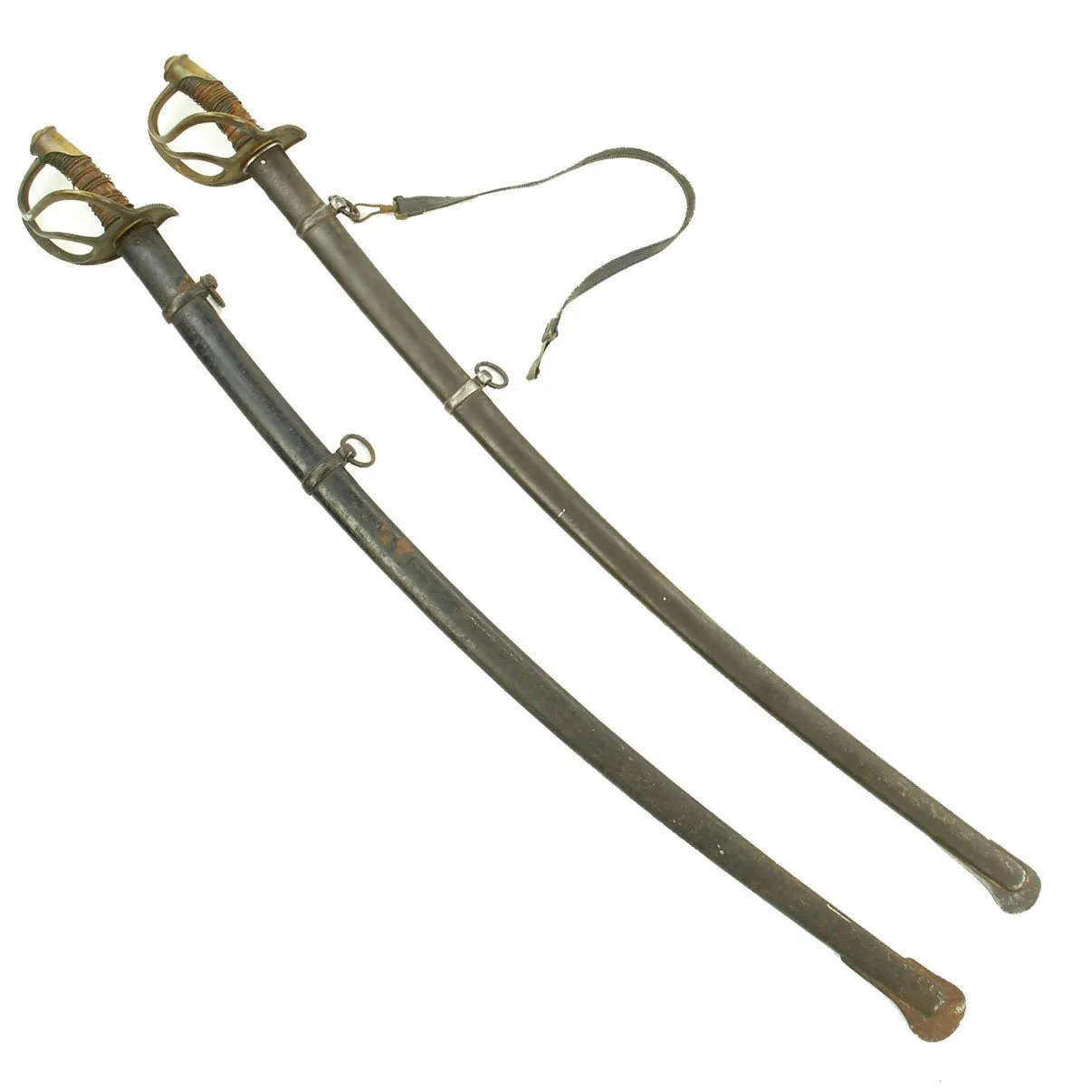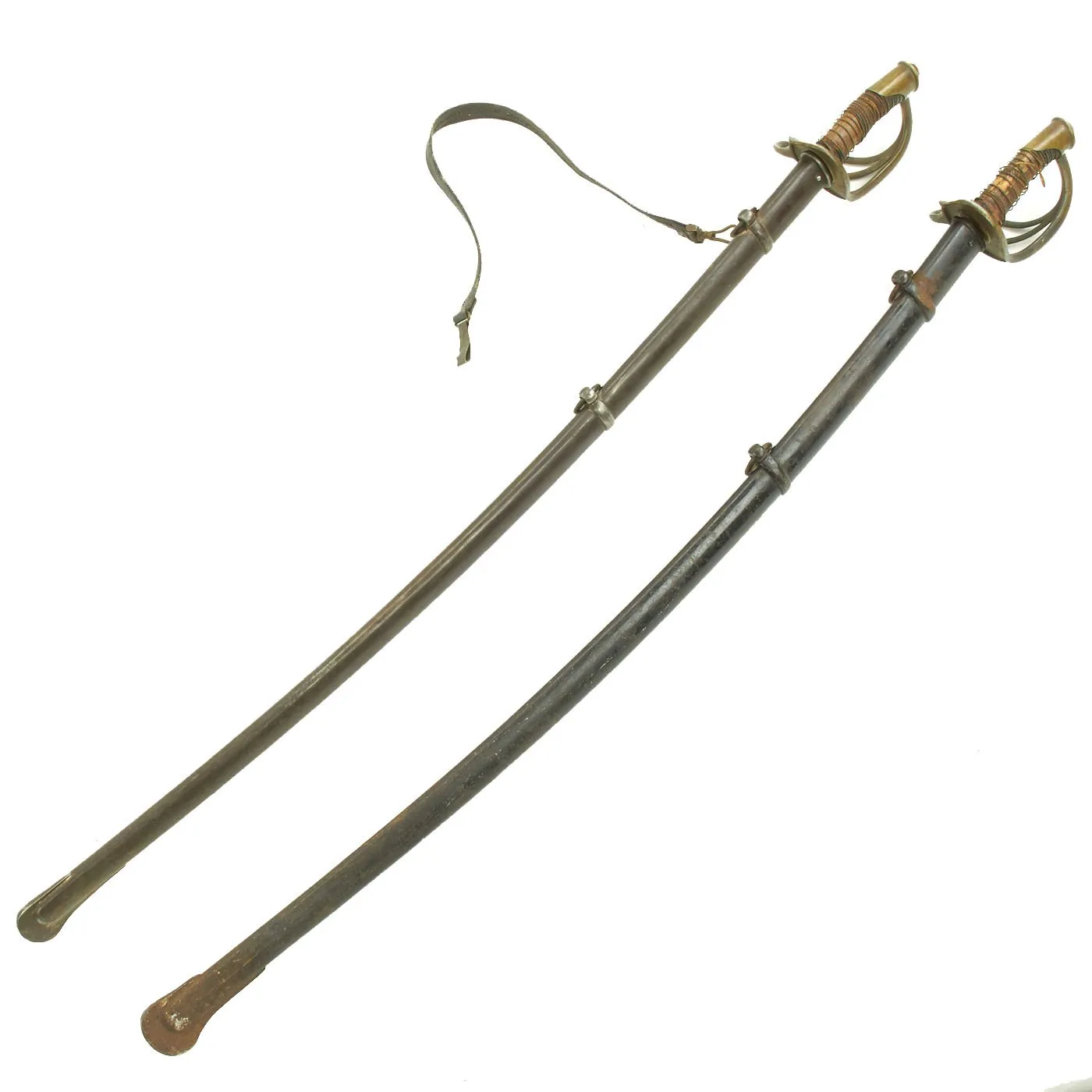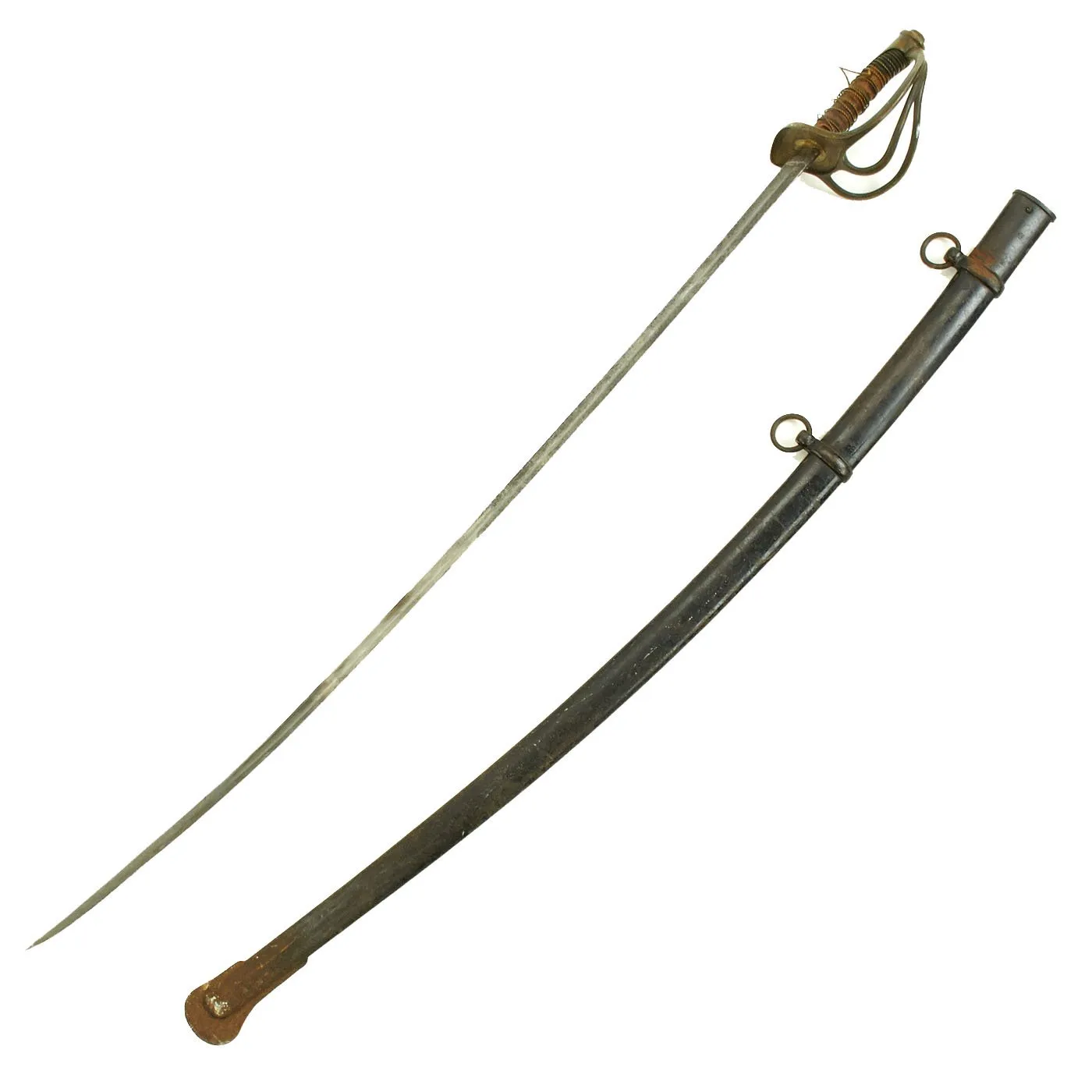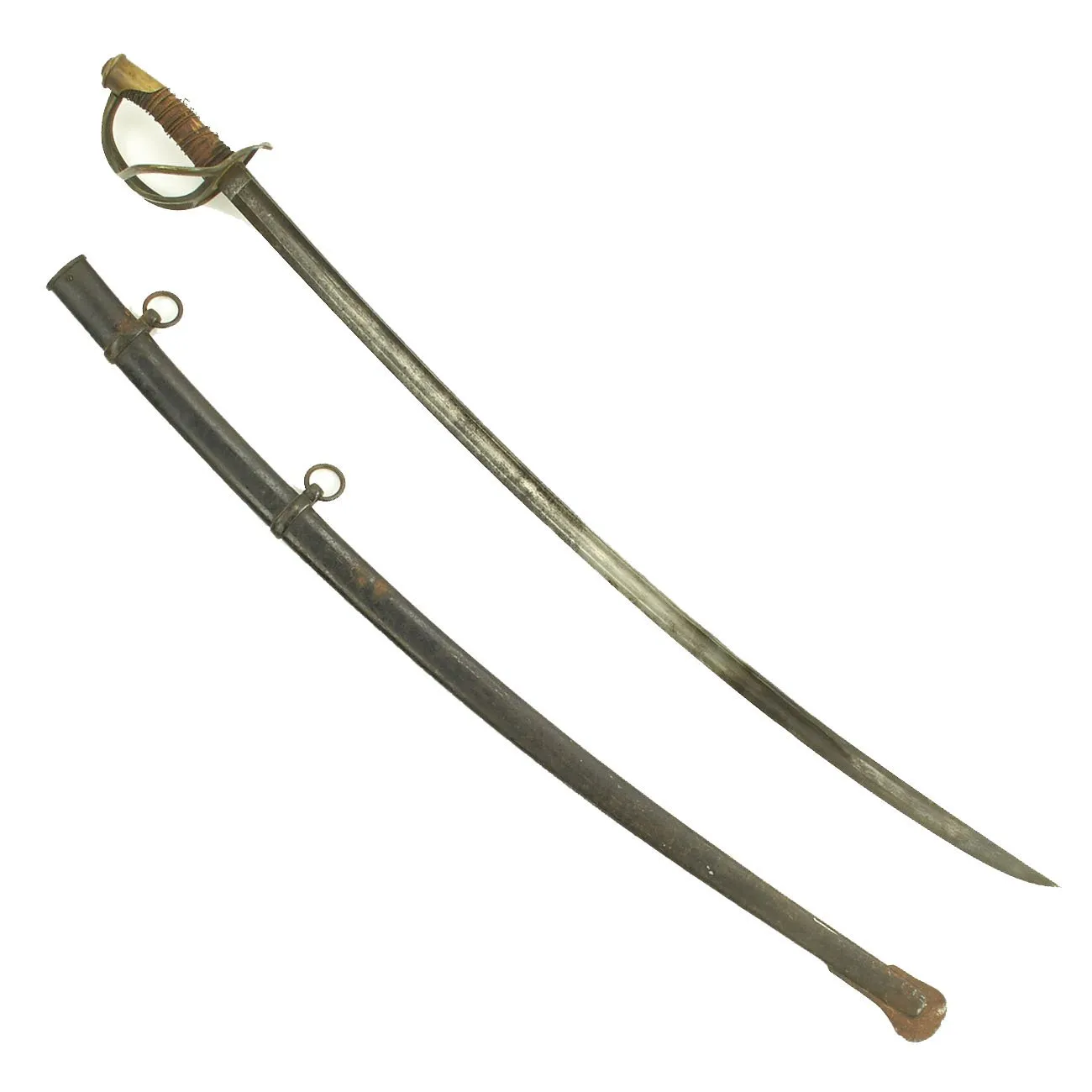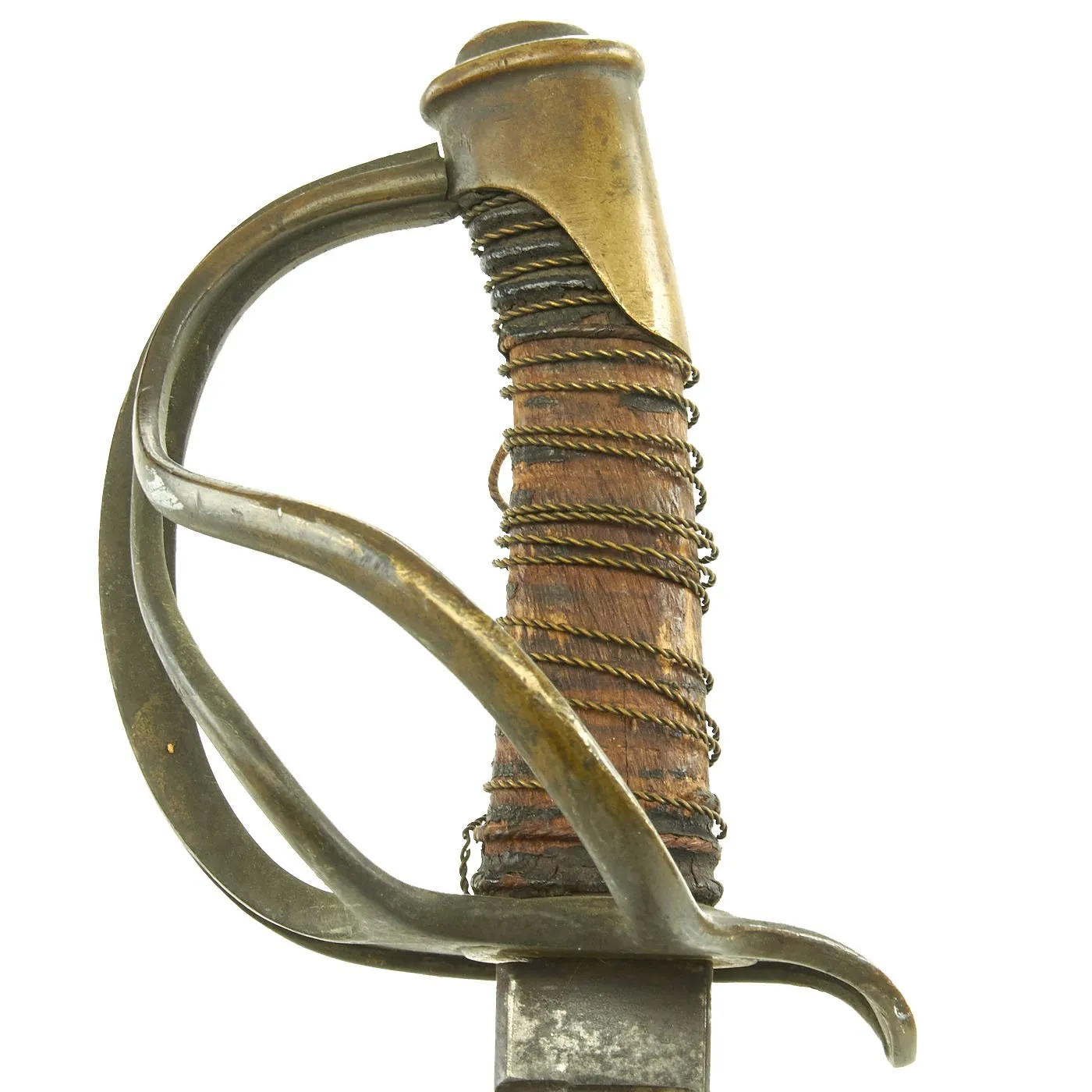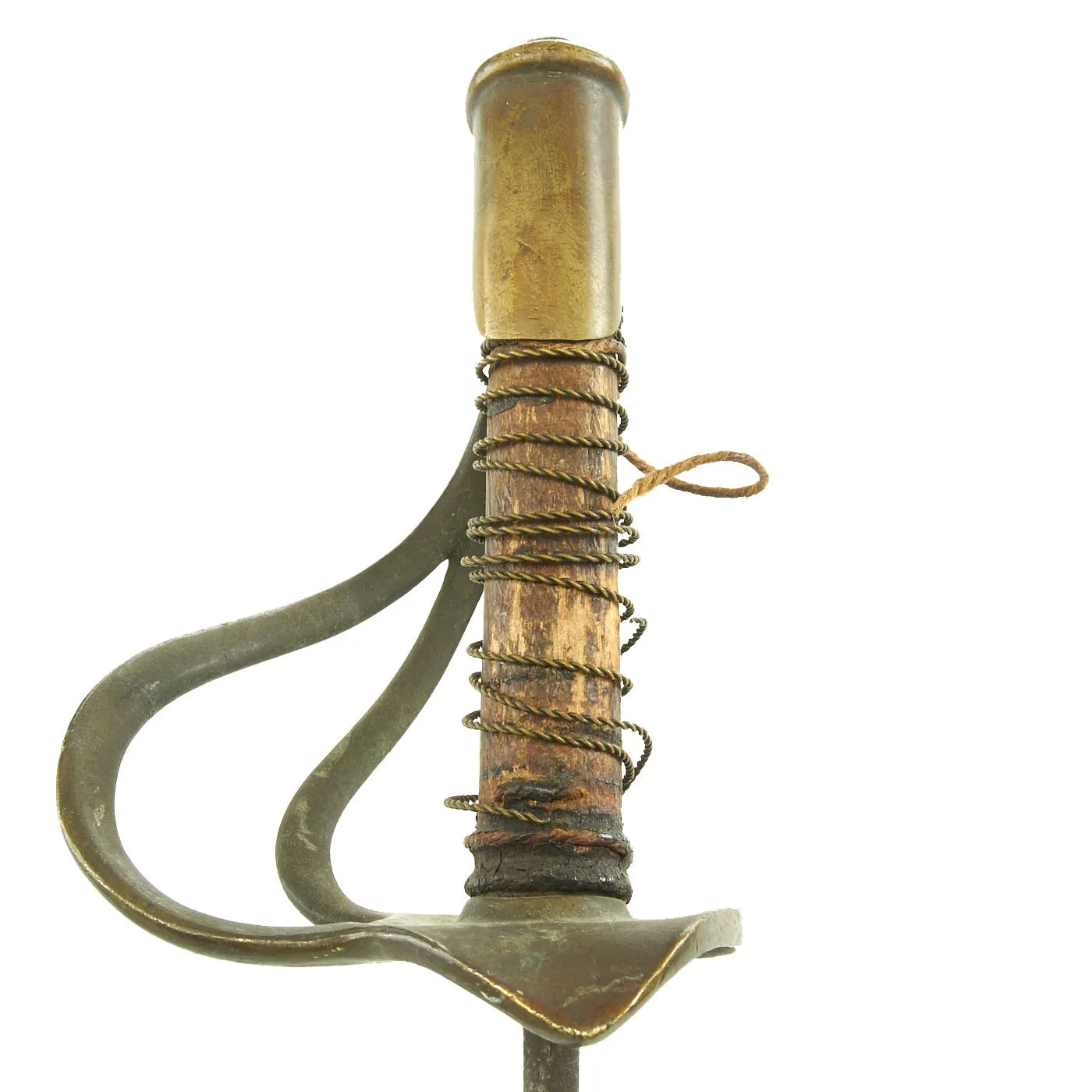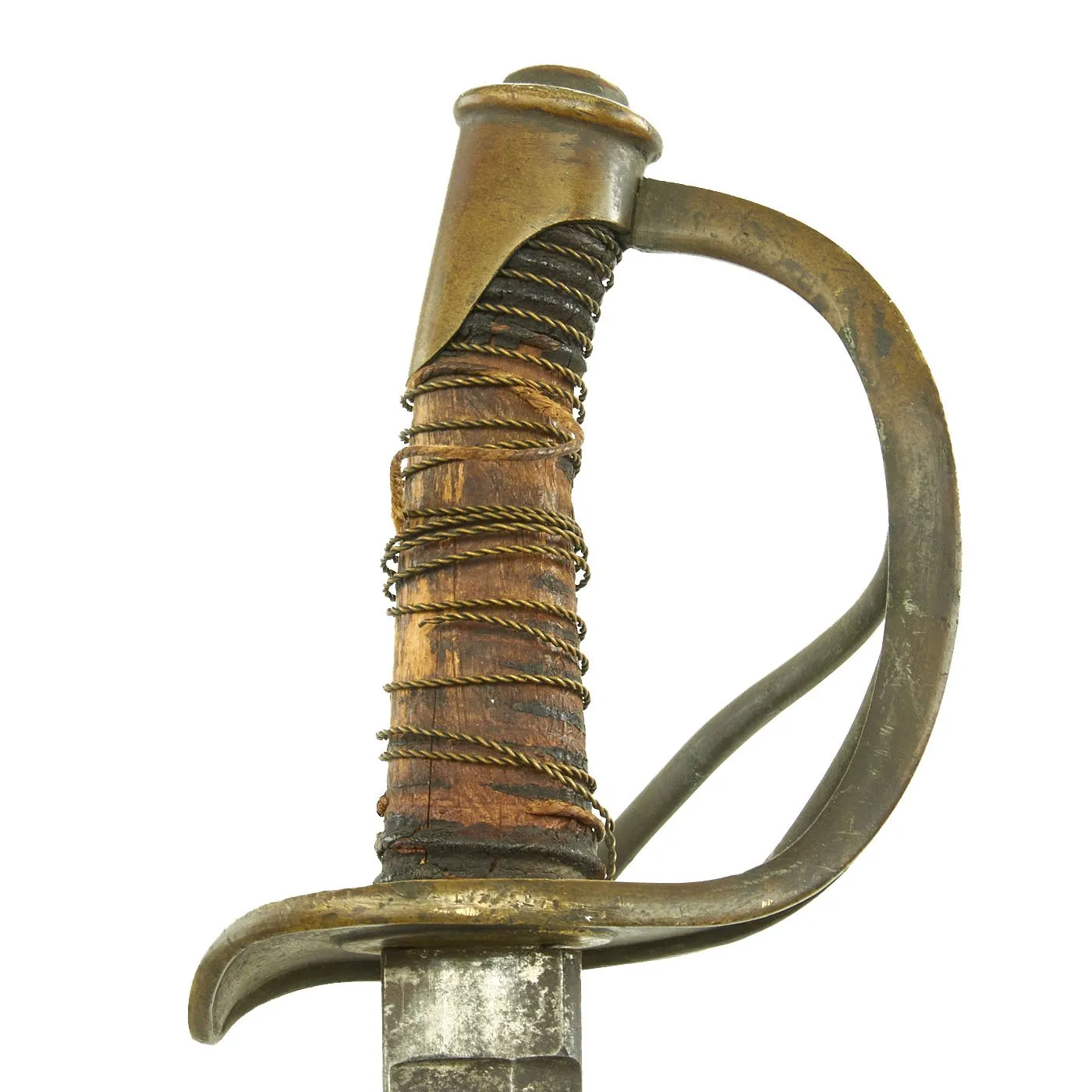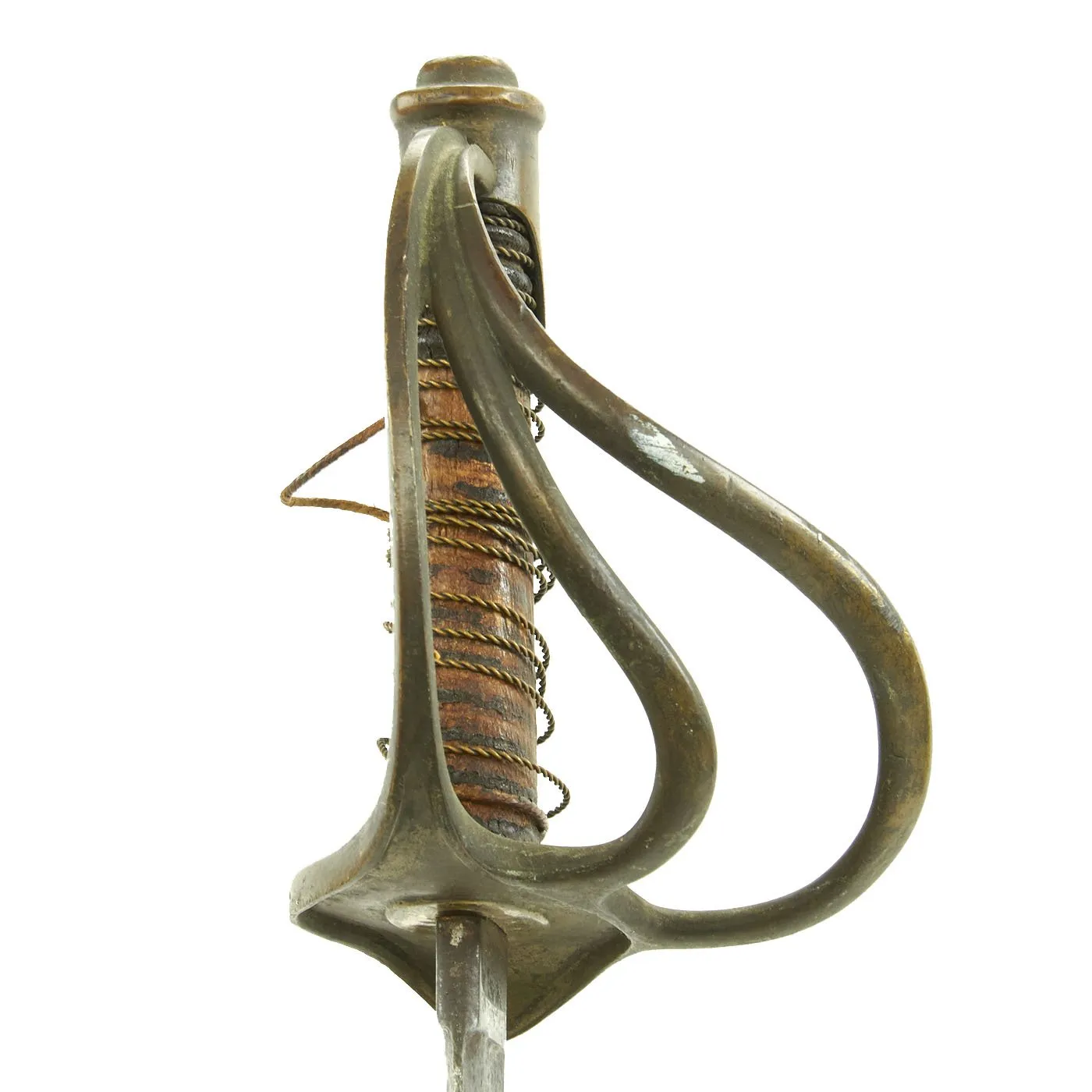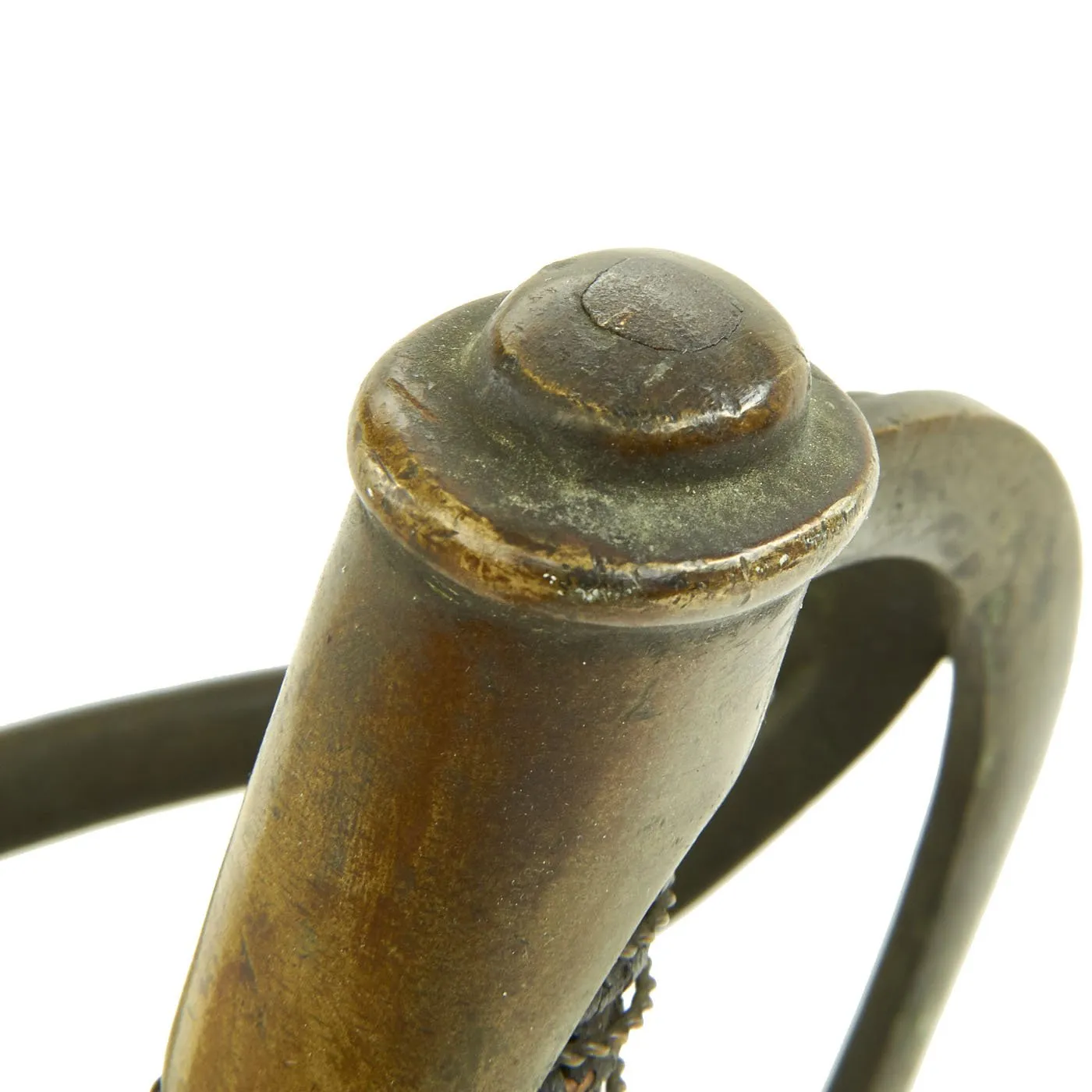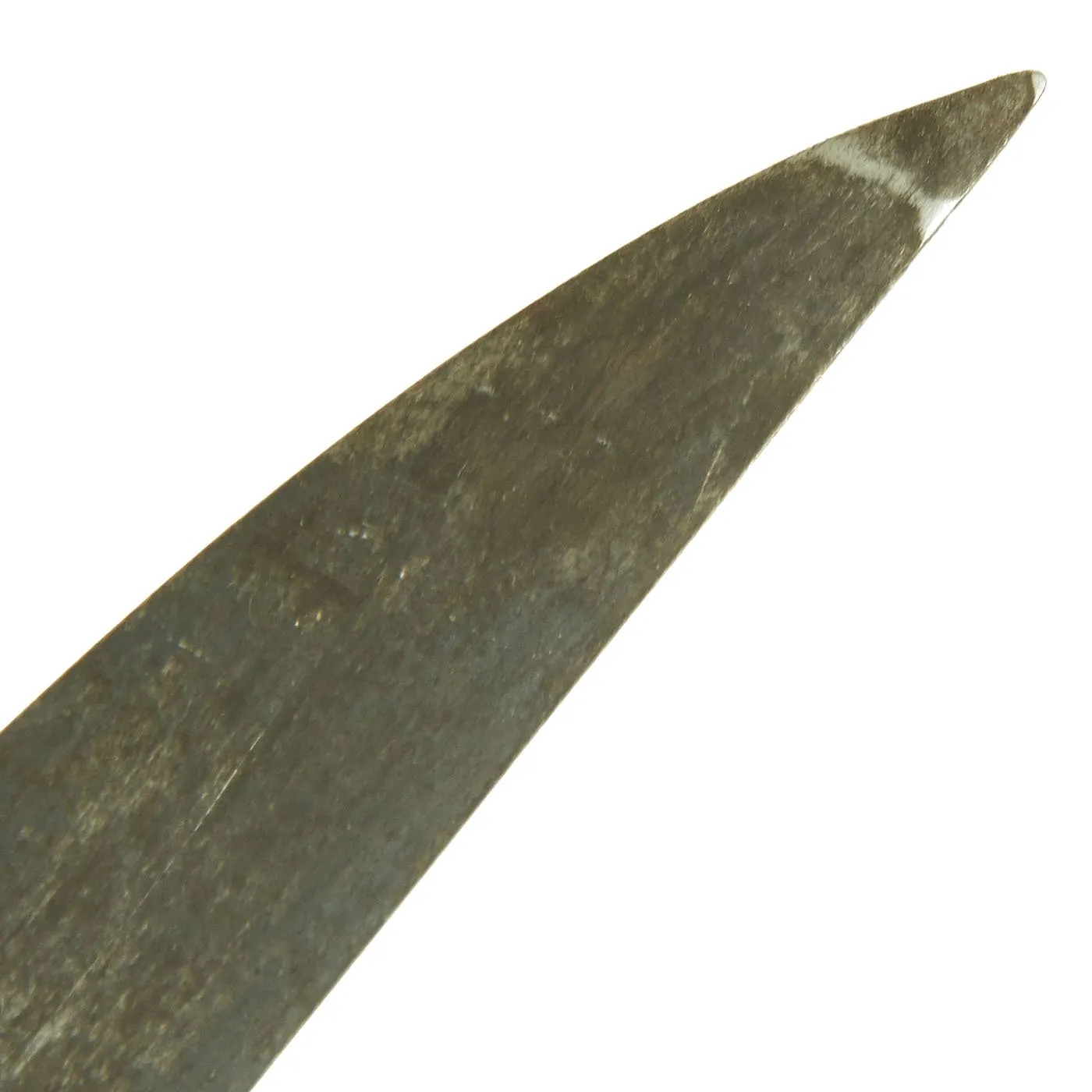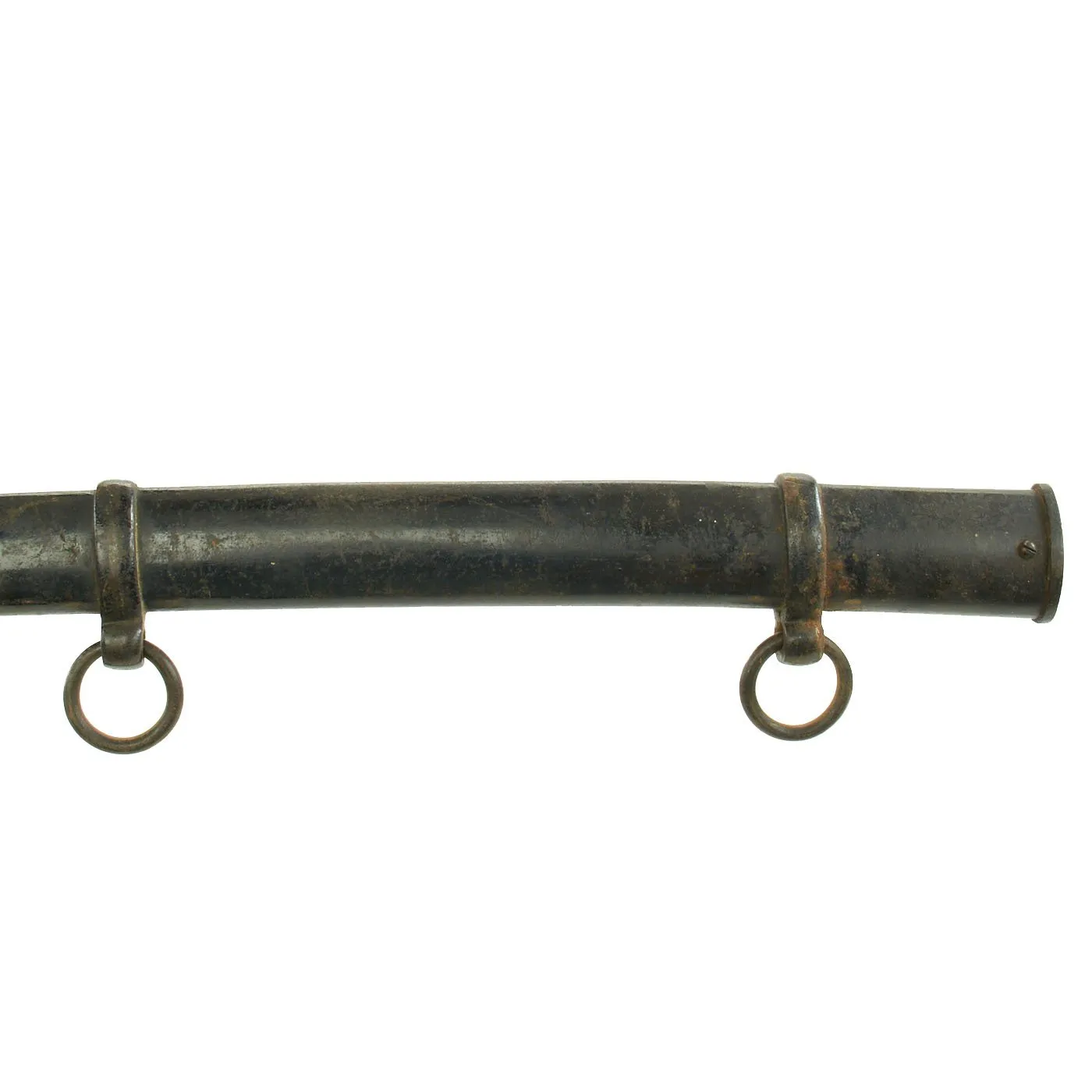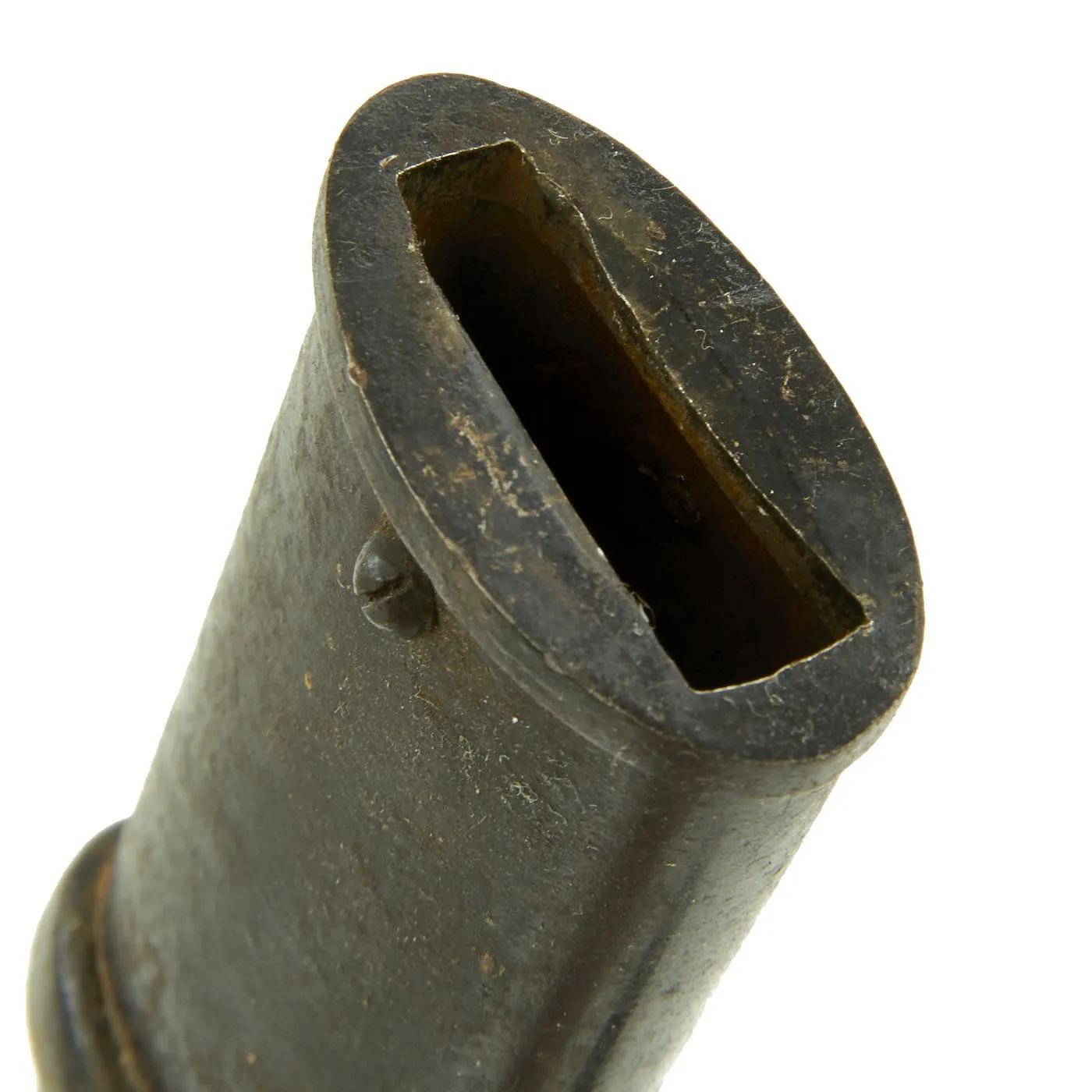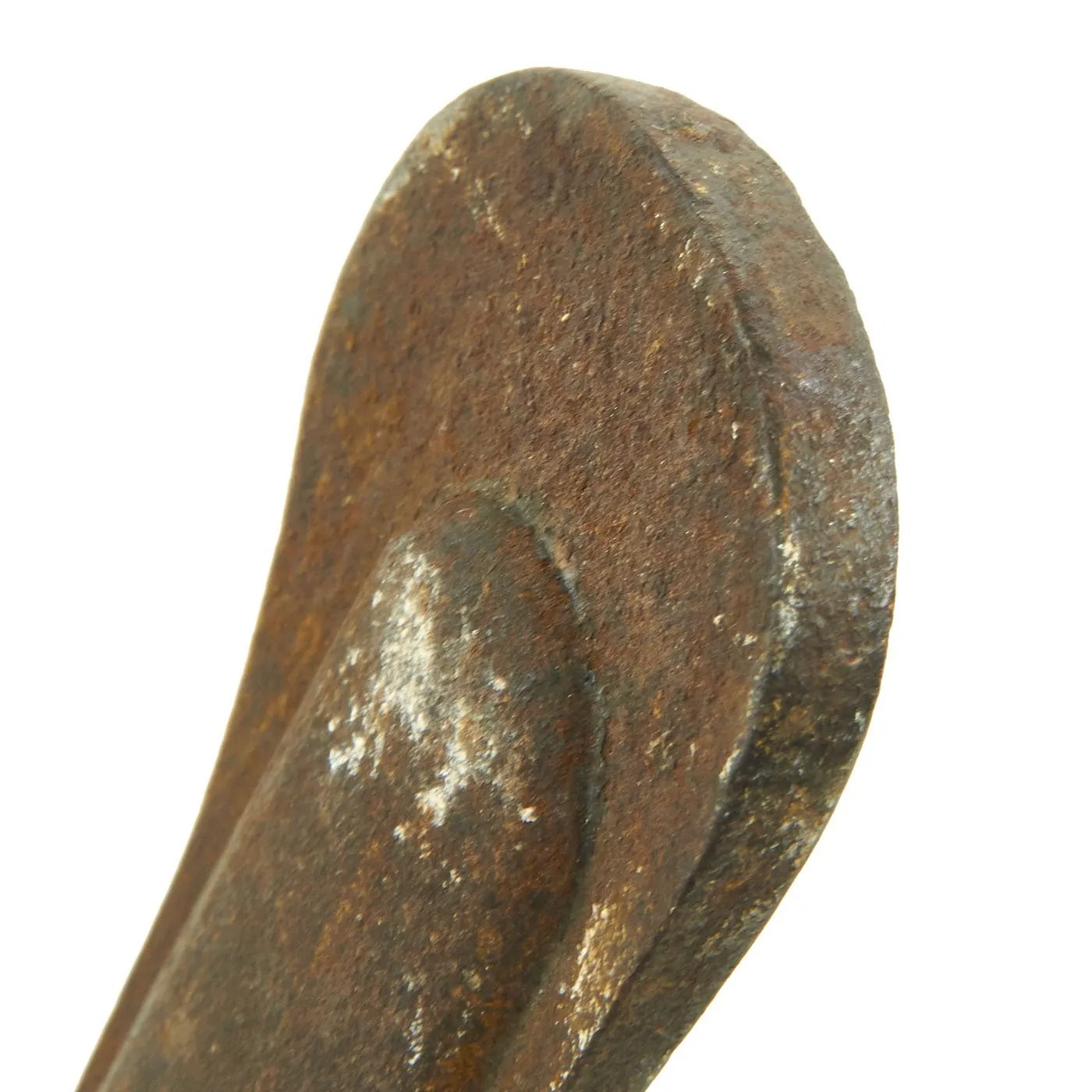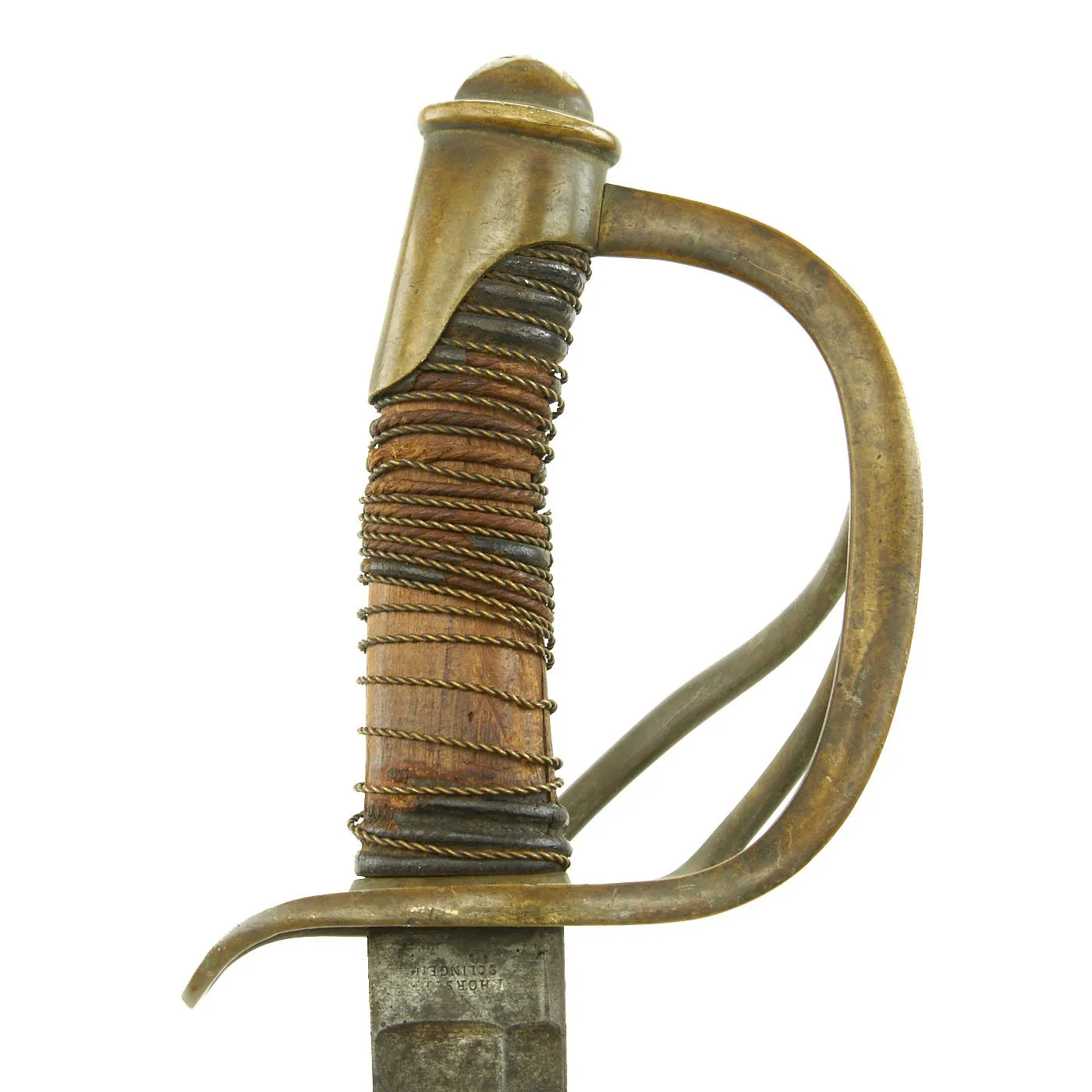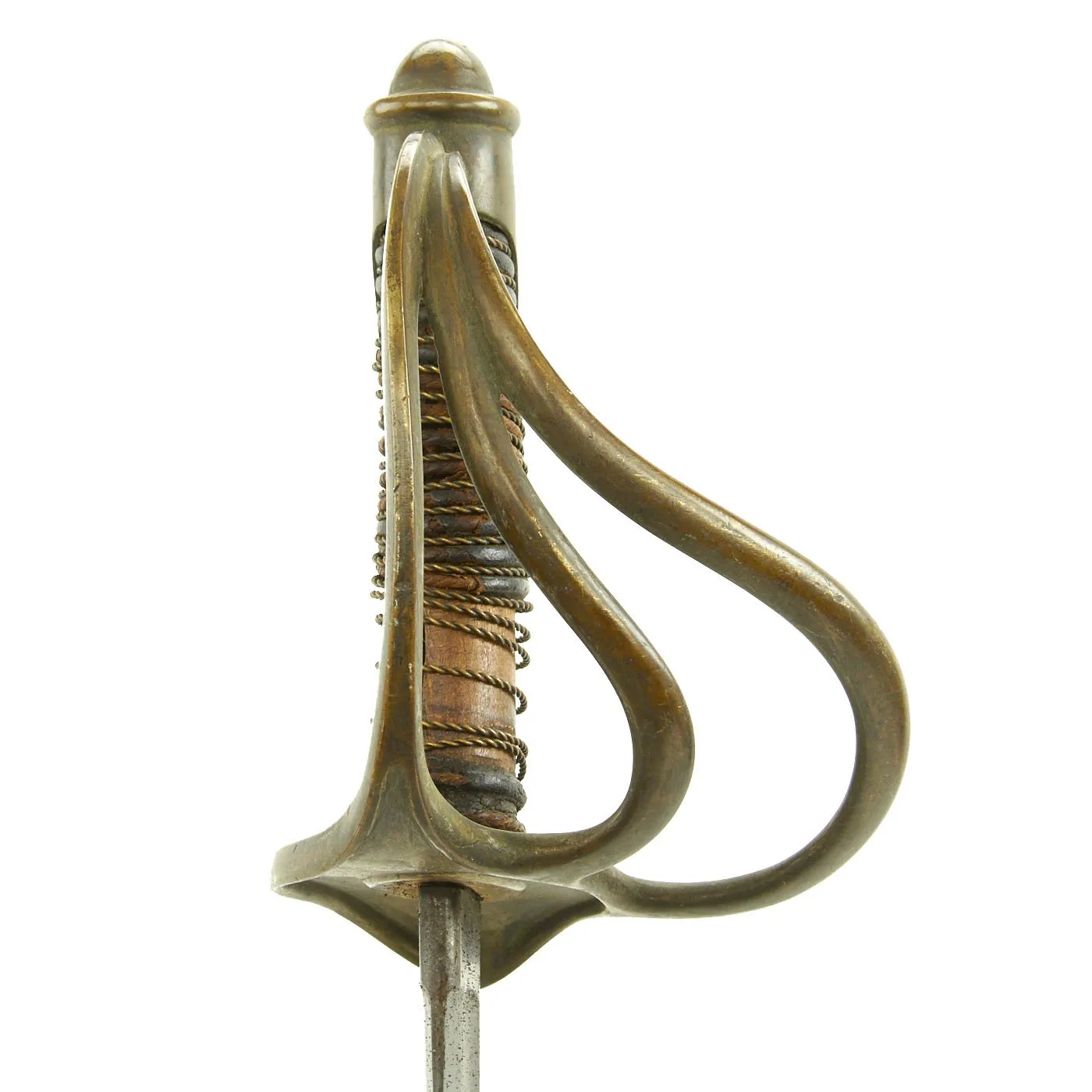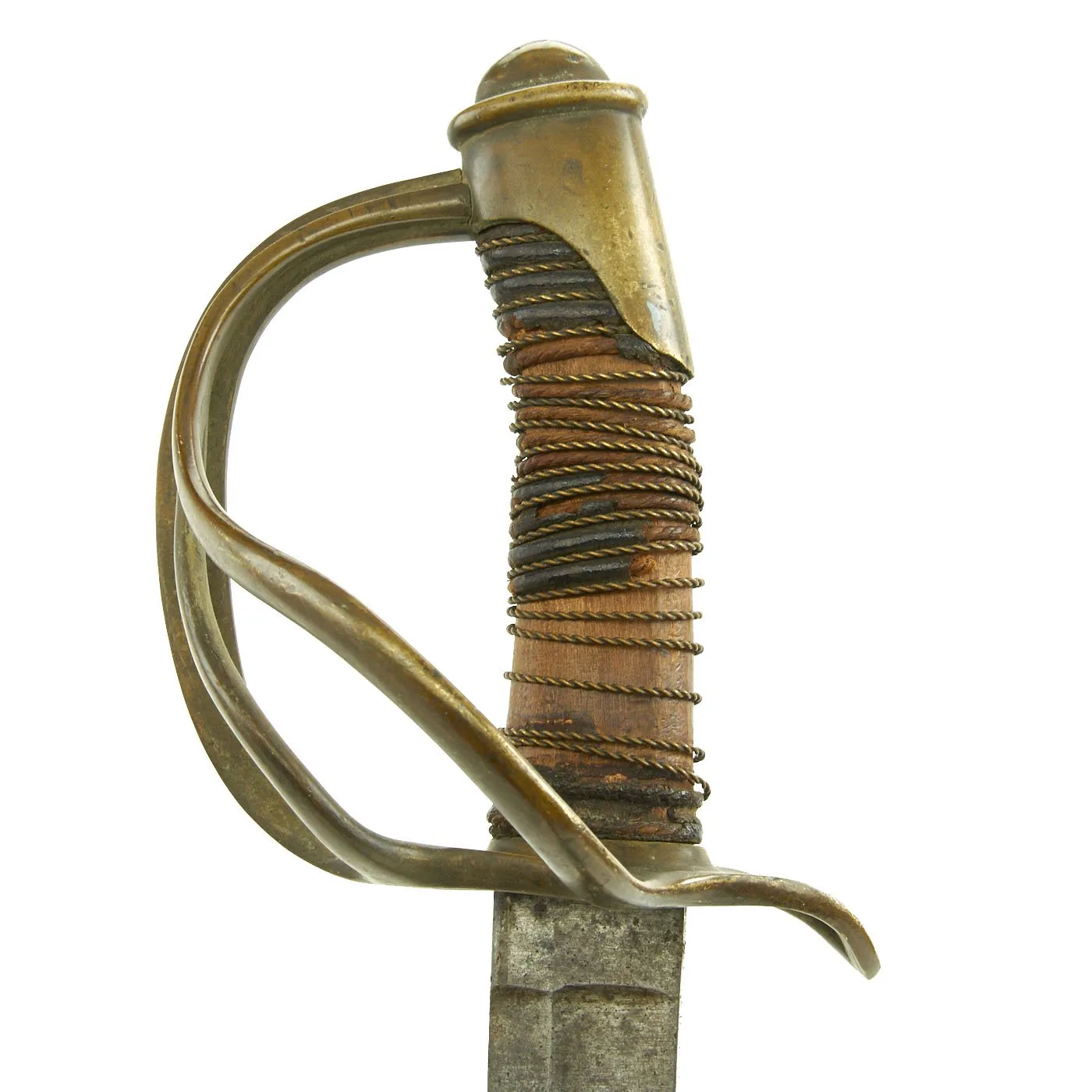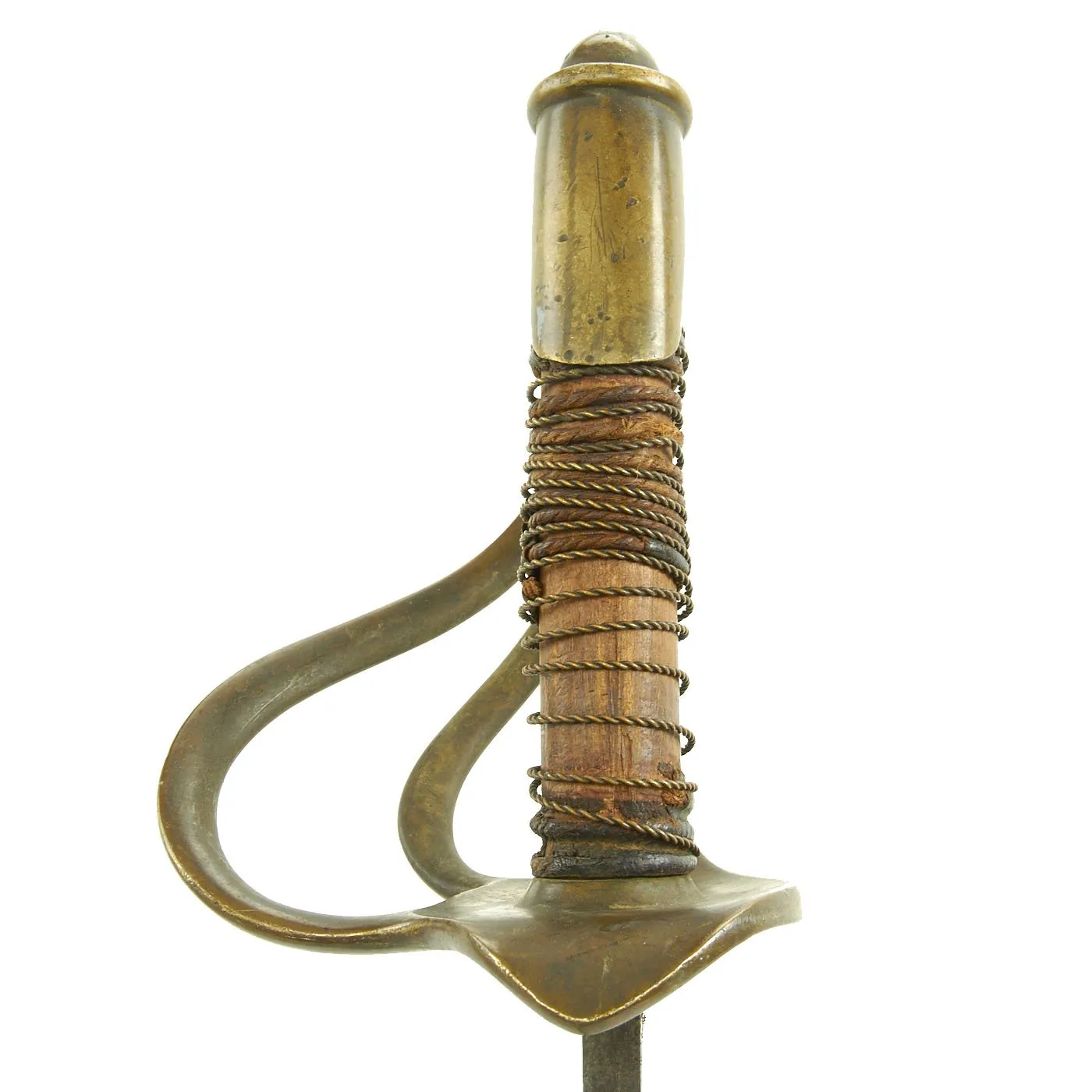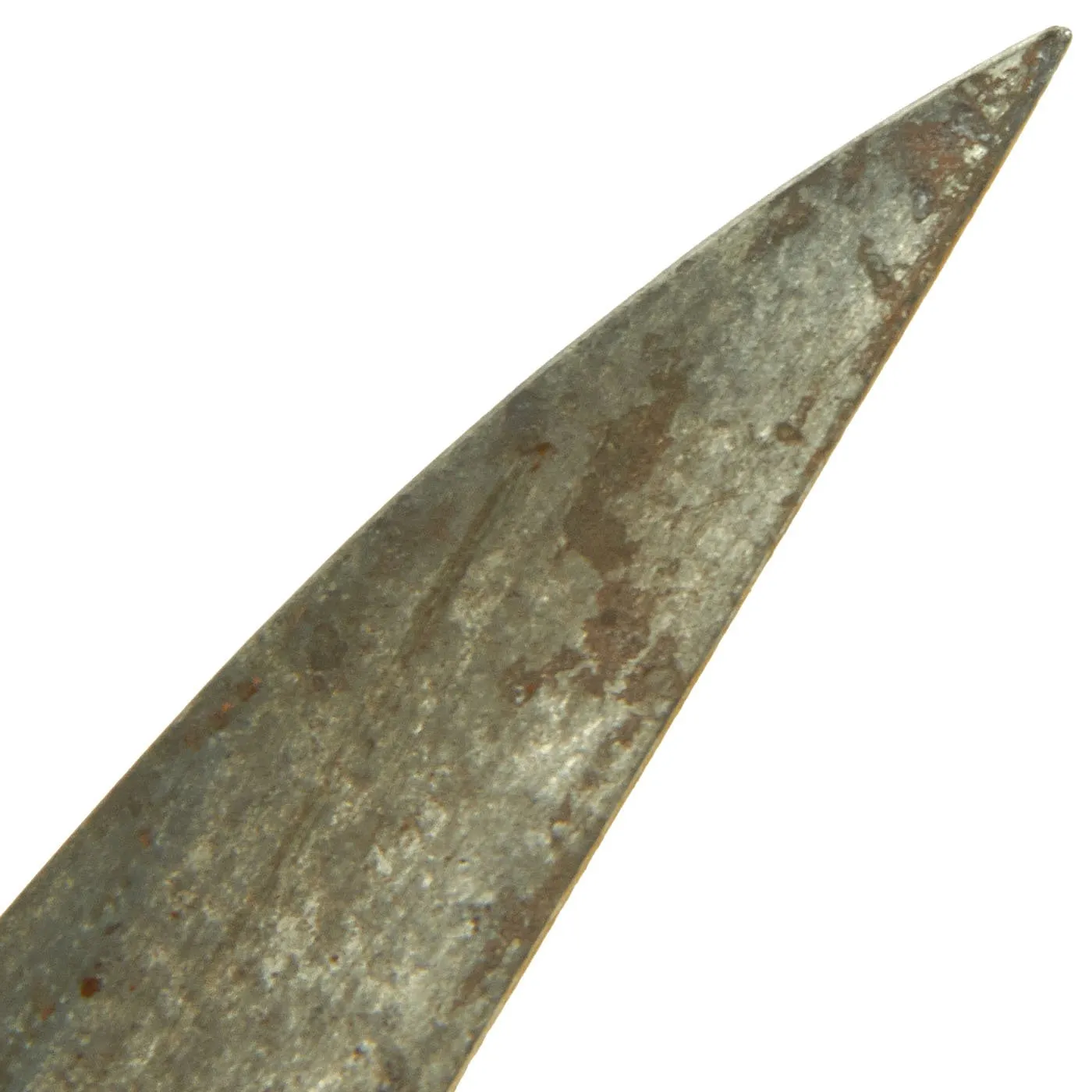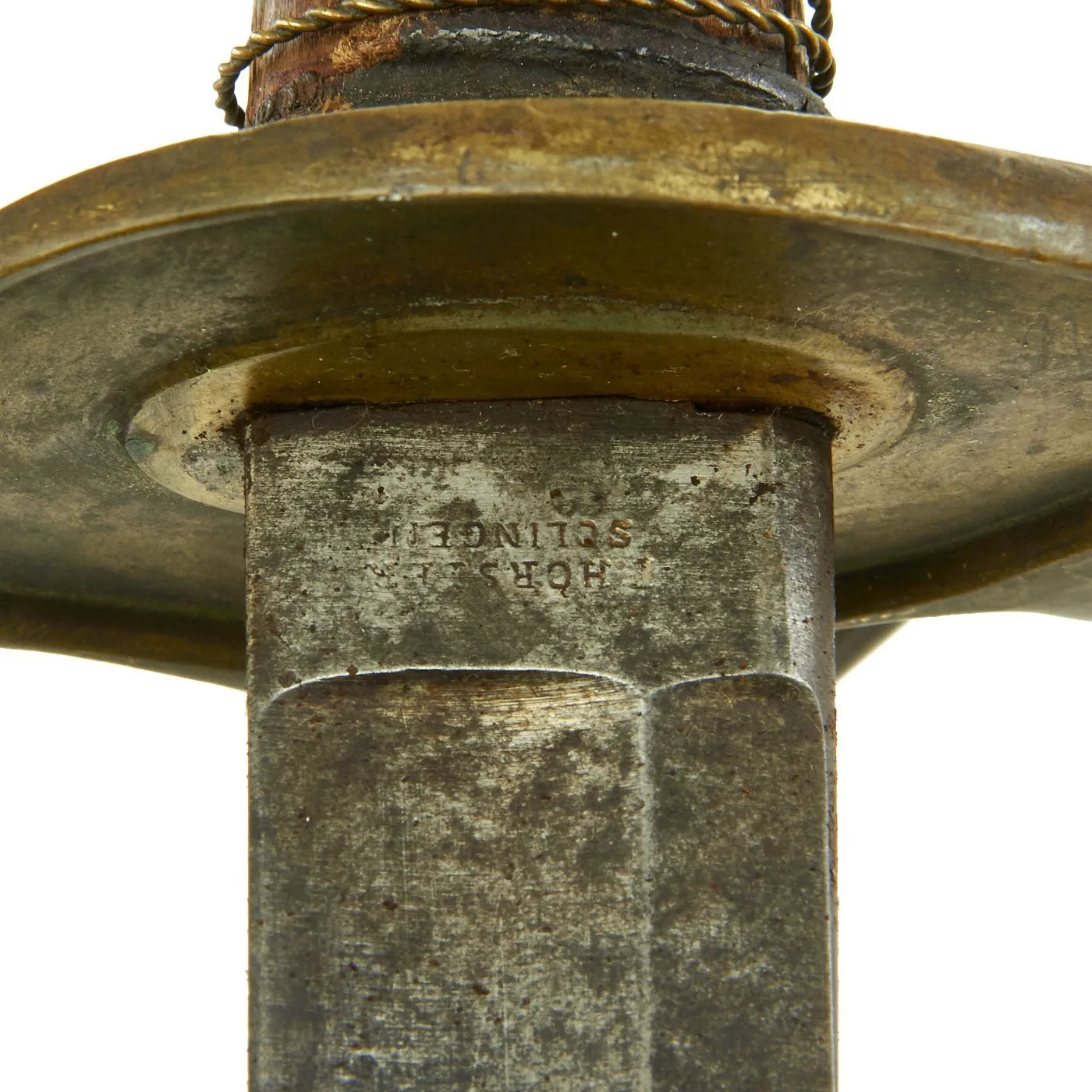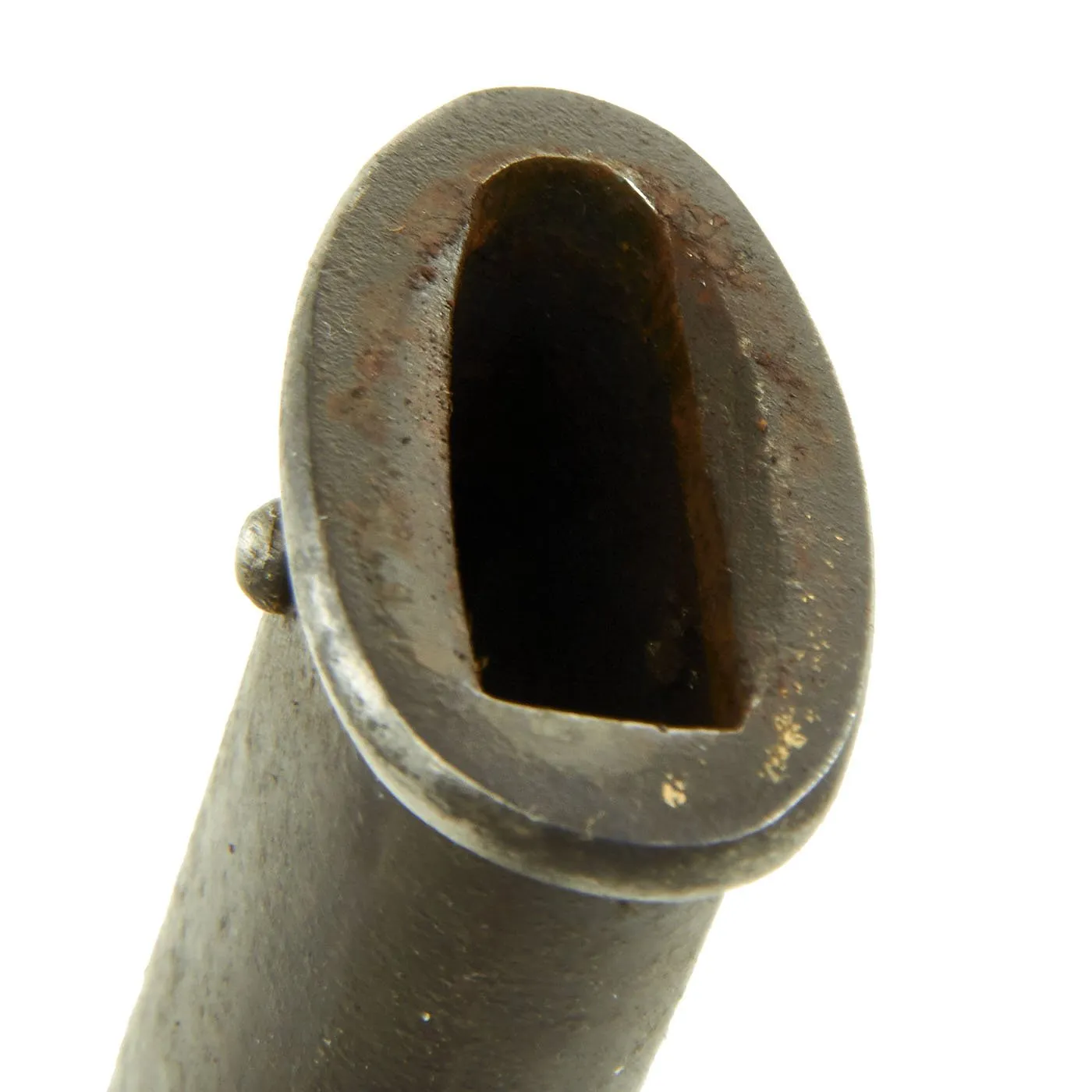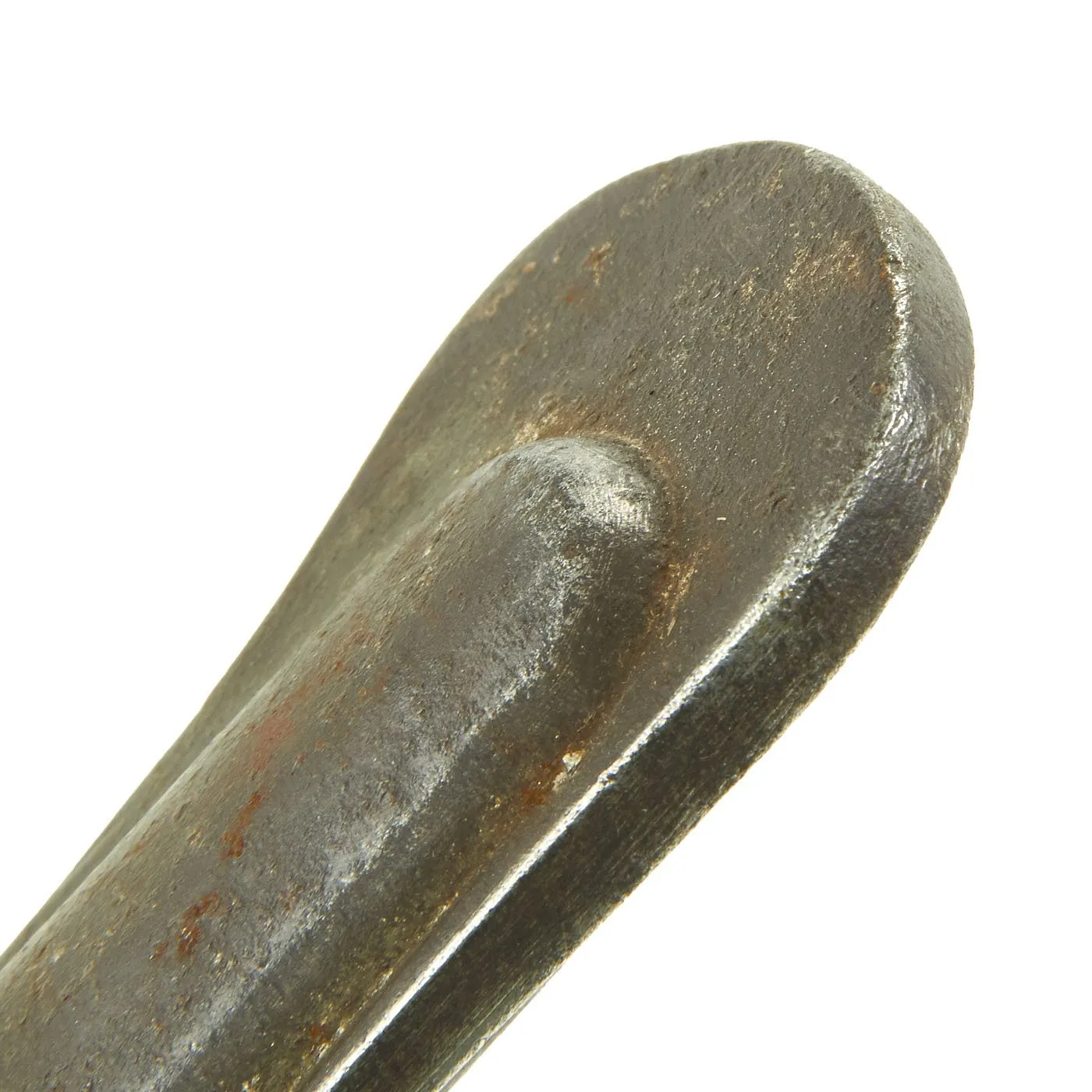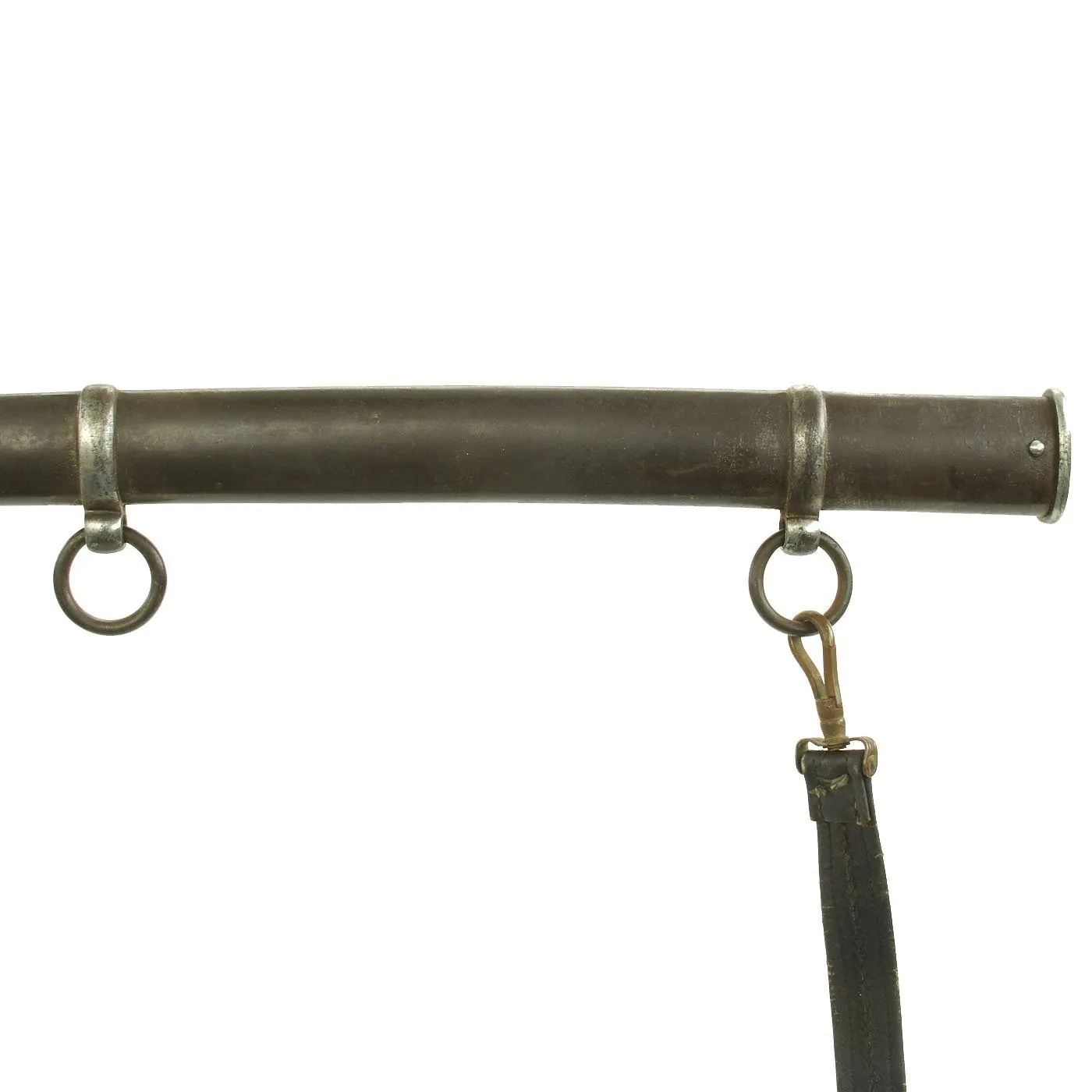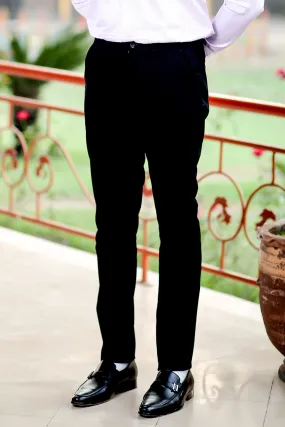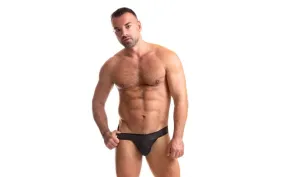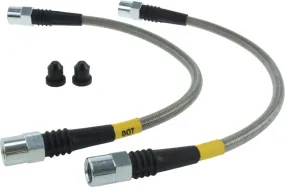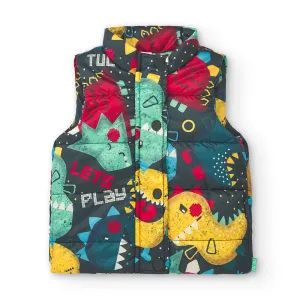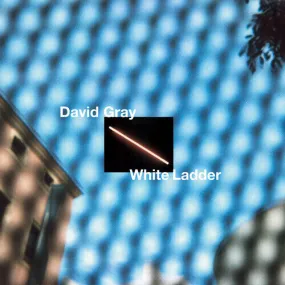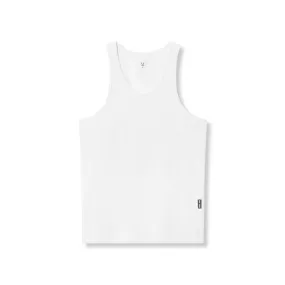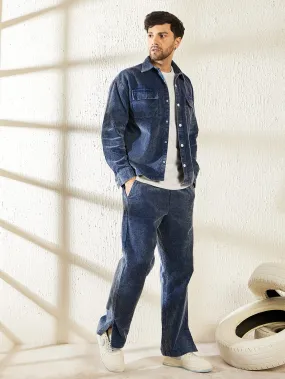Original Item: Only One Set of Two Available. We received these out of an old attic collection, along with about 100 other swords. While some of the swords were in great shape, some were purchased pretty much to be wall hangers. These heavy Cavalry Sabers, known as "Old Wristbreaker" among troops, were designated the U.S. Model of 1840, but was widely used in the War between the States on both sides.
Both North and South imported Swords and guns from Europe and European Manufacturers, mostly in Germany, and they did not want the eventual "winning side" to be able blame them for "supplying the enemy", so they used minimized markings during this period, with no proof marks. These are typical examples that could have been used by the Confederacy or the Union.
Both sword conforms quite well to the M-1840 U.S. Heavy Cavalry pattern, with brass three branch hand guards with a tall "lip" around the top of the cross guard. They have the correctly wicked heavy curved blades with the "flat back" spine of the 1840 pattern.
The first example has a 35 1/2 inch blade and is 41 1/2 inches in overall length, just about correct for the M1840. It is marked on the ricasso with F. HÖRSTER / SOLINGEN, indicating it is definitely a German Imported Sword. The blade is relatively nice, with a lovelypatina and some staining. The grip unfortunately is missing most of the leather, as shown, though the underlying cord and brass wrapping are still present. The scabbard is quite nice, with an oxidized patina, and still has one of the two leather sword hangers attached to the loop.
The second example has a 36 inch blade and is 42 inches in overall length, which is the "official" specification for the M1840. There are no markings we can see on the sword at all, even inspector markings, so this also is most likely an imported example. It has a slightly rounded spine, but not enough to be an M1860 pattern. The imported swords often would vary from official specifications, as they were private purchase. The grip unfortunately is missing most of the leather, as shown, though the underlying cord and brass wrapping are still partly present. The scabbard is nice, though it was painted black at some point.
A very nice set of two Civil War Era M-1840 Wristbreaker Sabers in relic condition: ready to display or possibly restore.
The Model 1840 Cavalry Saber was based on the 1822 French hussar's sabre. Unlike its replacement, the Model 1860 Light Cavalry Saber the M1840 has a ridge around its quillon, a leather grip wrapped in wire (rather than grooves cut into the wooden handle) and a flat, slotted throat. It is 44" long with a 35" blade and weighs roughly 2.5 lbs.
The M1840 was designed for slashing and because of its heavy flat-backed blade was given the nickname "Old Wristbreaker." It was adopted due to the army's dissatisfaction with its predecessor the model 1833 Dragoon Saber, the first cavalry sword adopted by the US Army. The iron-hilted M1833 was based on a Napoleonic-era British sword used by heavy cavalry and reputed to wrap "rubber like around a man's head and was only good for cutting butter" An ornate gilded version of this earlier sword was used by General Philip Sheridan during the Civil War; Sheridan had its sheath engraved with the battles he participated in. It was evident a replacement was needed so in 1838 the US Ordnance Dept bought British, French and Prussian swords and field-tested them. The troopers overwhelmingly preferred the French saber, and a copy of it was put into production in 1844. A total of 2000 were ordered and by 1846, 600 were in frontline service.
The 1840 saber was used during the U.S.-Mexican War by US Cavalry. The main contractors were Ames of Cabotville, Horstmann, and Tiffany but due to the large number of swords required at least 1000 were made in Germany by S&K and imported. Some troopers used Prussian sabers as an alternative, which in contrast to the M1840 had straight blades.
When production ceased in 1858 over 23,700 were made. During the US Civil War it continued to be issued to Union Cavalry as in the early years it was more readily available than the M1860. George B McClellan carried one at the front, keeping his regulation officer's sword for full dress occasions. Many were also used by the Confederacy including General Nathan Bedford Forrest who had both edges of his sword sharpened to increase combat effectiveness.




